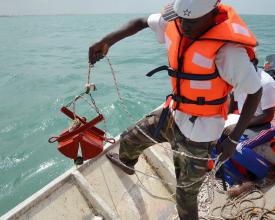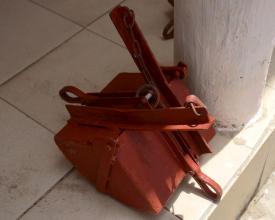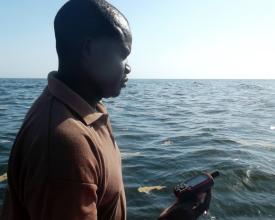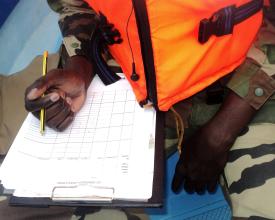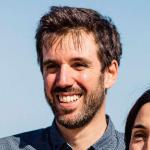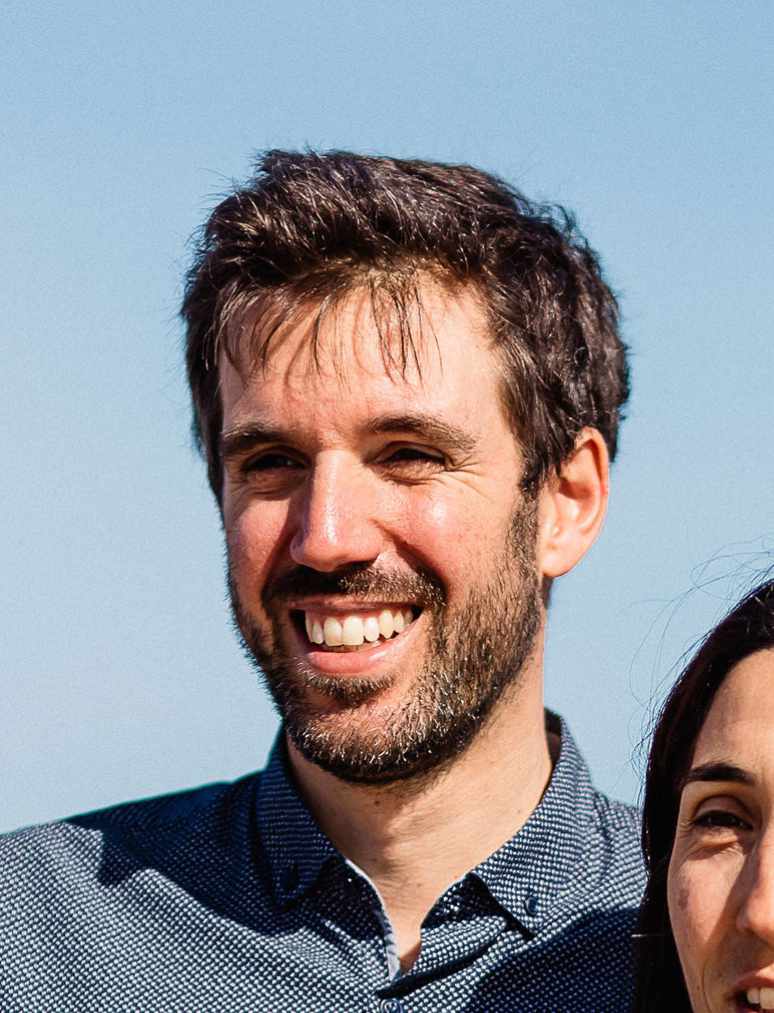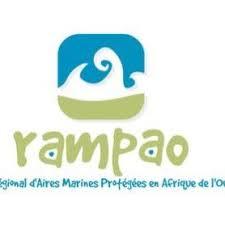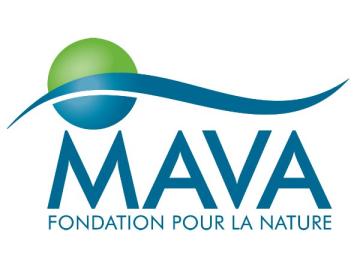
Cartografía participativa de las praderas marinas para la conservación de la biodiversidad y la pesca sostenible
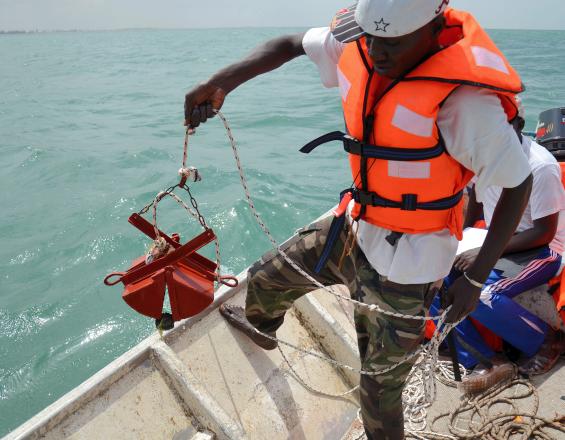
En África Occidental, como en muchos otros lugares del mundo, los recursos marinos y costeros necesitan urgentemente ser conservados. Cuando se establecen y gestionan en colaboración con las comunidades locales, las áreas marinas protegidas (AMP) pueden contribuir a la conservación de los ecosistemas para mejorar la situación socioeconómica y los medios de subsistencia de las comunidades. En la AMP de Joal-Fadiouth (Senegal), los enfoques basados en la comunidad, como la cartografía participativa de las praderas marinas, aumentan la legitimidad de las acciones de conservación al aprovechar los conocimientos de los pescadores locales y ayudar a concienciar sobre las interrelaciones de los ecosistemas que son importantes para la pesca comercial y para las comunidades que dependen de ellos. Esta solución fue desarrollada conjuntamente por la Fundación FIBA (ahora Fundación MAVA) y el Comité de Gestión de la AMP Joal-Fadiouth.
Contexto
Défis à relever
Los pescadores de Joal-Fadiouth habían expresado claramente su deseo de realizar ellos mismos la cartografía de sus praderas marinas y reducir al mínimo la participación de agentes internacionales. Sin embargo, debido a la turbidez del océano que rodea Joal-Fadiouth, las imágenes por satélite habrían resultado difíciles de analizar y, además, habrían necesitado el apoyo de expertos en SIG. Por tanto, sólo un ejercicio de cartografía in situ se ajustaba a las condiciones de los pescadores. En este sentido, el principal reto al que se enfrentaban los pescadores era la falta de un equipo completo de buceo. Por suerte, en aquel momento, la oficina del Instituto Francés de Investigación y Desarrollo (IRD) en Dakar estaba probando diferentes pinzas para la recogida de muestras bajo el agua. Se probó y reprodujo una de las pequeñas pinzas del IRD para recoger muestras de hierbas marinas a profundidades que los pescadores no podrían alcanzar con sus únicas máscaras de buceo.
Ubicación
Procesar
Resumen del proceso
Los cuatro pilares se construyen unos sobre otros. La creación de la AMP comunitaria sentó las bases para la participación y la capacitación de los pescadores, lo que a su vez contribuyó a aumentar la concienciación y a generar un sentimiento de propiedad entre los pescadores que no habían participado en las actividades de cartografía participativa. Esto reforzó la gestión adaptativa de la AMP y aumentó la legitimidad de algunas de las normas que se están aplicando. Aunque la combinación de estos elementos contribuyó en gran medida a los resultados positivos de cada una de sus acciones, también pueden reproducirse de forma independiente en otros contextos.
Bloques de construcción
Un Área Marina Protegida de base comunitaria
La AMP de Joal-Fadiouth se creó el 4 de noviembre de 2004. La idea de la conservación de los recursos marinos, y por tanto la creación de la AMP, surgió directamente de la comunidad local de pescadores. La Dirección de Áreas Marinas Protegidas de Base Comunitaria (DAMCP), creada para apoyar las estrategias nacionales de crecimiento azul y conservación de la biodiversidad de Senegal, cogestiona el AMP junto con la comunidad de pescadores.
Factores facilitadores
En 2006 se creó un Comité de Gestión en el que están representados todos los grupos de interesados directa o indirectamente afectados por el AMP o relacionados con ella, como pescadores, pescadoras, profesionales del turismo o la policía. En total, 18 representantes forman parte del Comité de Gestión.
Lección aprendida
La existencia de un comité de gestión que funcionara correctamente desempeñó un papel esencial en el desarrollo del proyecto. Los miembros de la AMP no querían limitarse a ser los anfitriones de un proyecto adicional, pilotado por una ONG externa, sino que querían realizar ellos mismos la cartografía para responder a sus necesidades de gestión. Por ello, su primer reto ha sido conseguir los conocimientos técnicos suficientes para llevar a cabo las actividades. El proyecto se inició con actividades de capacitación, apoyadas por la Fundación FIBA para los aspectos técnicos y financieros, y por la Red Regional de AMP (RAMPAO) para el diseño del ejercicio de cartografía.
Cartografía participativa de praderas marinas por pescadores locales
Los pescadores utilizaron un mapa batimétrico de la AMP combinado con dispositivos GPS. Cada ubicación GPS marcada correspondía a una zona investigada de 50 m2, en la que se confirmaba o no la presencia de praderas marinas. Las especies exactas de praderas marinas (principalmente Cymodocea) se indexaron para cada lugar en un cuaderno específico. En total, se recogieron unas 1500 muestras en la AMP. A continuación se asignó un código de colores a los distintos hallazgos -praderas marinas, arenas o rocas-, que luego se transcribieron en un mapa de papel gracias a las coordenadas GPS recogidas. Además, a lo largo de un año se realizaron aleatoriamente veinte muestreos -reconociendo el sesgo estacional- con el fin de constatar de nuevo la presencia o ausencia de praderas marinas. El protocolo de las encuestas se inspiró en los ejemplos proporcionados por las guías de campo de Seagrass-Watch. El mapa en papel y las coordenadas GPS fueron transformados posteriormente en un mapa digital por el Sr. Paul Tendeng, técnico de SIG de la Red Regional de Áreas Marinas Protegidas de África Occidental (RAMPAO).
Factores facilitadores
En 2009, la Fundación FIBA (Fondation Internationale du Banc d'Arguin) -que en 2014 se fusionó con la actual Fundación MAVA- apoyó una primera visita del experto en praderas marinas Gérard Pergent (Universidad Pacal Paoli de Córcega). En Joal, esta visita y las observaciones in situ llamaron la atención del Sr. Abdou Karim Sall (Presidente del Comité de Gestión de la AMP Joal-Faditouh) y de otros pescadores. Este encuentro arrojó luz sobre la importancia de las praderas marinas en Joal-Fadiouth, especialmente para recursos locales como los calamares.
Lección aprendida
Una vez que los pescadores y el comité de gestión de la AMP comprendieron la importancia de proteger las praderas marinas en beneficio de sus pesquerías, solicitaron apoyo a la fundación FIBA, con la que mantenían una larga relación de confianza. Llevada a cabo entre 2012 y 2014, pusieron en marcha la primera cartografía participativa de praderas marinas en Senegal, con un 70-80% del trabajo realizado voluntariamente por los propios pescadores. El equipo de FIBA, entonces con sede en Dakar y compuesto por Mr. Julien Semelin (Coordinador del Programa de Especies y Hábitats Marinos), Simon Mériaux (Coordinador del Programa de Desarrollo Organizativo) y Antonio Araujo (Experto Técnico), prestó apoyo financiero y técnico a los pescadores de Joal-Fadiouth. En total, FIBA aportó unos 20.000 euros para materiales, combustible y actividades de concienciación, y dedicó unos 40 días de trabajo a la asistencia técnica.
Actividades de sensibilización
En cada barrio de Joal-Fadiouth se llevaron a cabo actividades de sensibilización. Se proyectaron cortometrajes a la comunidad de pescadores en general, que incluían imágenes submarinas de pescadores buceando en busca de praderas marinas. Las películas se proyectaban por la noche, seguidas de debates con el equipo de gestión de la AMP. Mientras que los pescadores eran el objetivo a través de reuniones específicas o escuchando las numerosas intervenciones del equipo de la AMP en la radio local, estas películas y debates eran la oportunidad de llegar a los demás miembros de la familia y del barrio.
Factores facilitadores
Desde su creación, el equipo de la AMP ha realizado periódicamente actividades de sensibilización, como la proyección de películas o entrevistas radiofónicas. Los pescadores y los habitantes estaban acostumbrados a escuchar mensajes procedentes del equipo de gestión, que gozaba de credibilidad.
Lección aprendida
Esto ayudó a concienciar sobre el papel fundamental que desempeñan las praderas marinas como zonas de cría y alimentación en su AMP, y a subrayar la importancia de su conservación tanto para las generaciones actuales de pescadores como para las futuras. Además, se compró equipo adicional de snorkel para que los pescadores locales pudieran ver las praderas marinas por sí mismos. La mayor concienciación de los pescadores en torno a las praderas marinas les llevó a solicitar una zonificación y señalización adecuadas de la AMP, para evitar daños involuntarios a las praderas marinas causados por sus anclas o las hélices de sus motores.
Arrecifes artificiales
Otra importante actividad relacionada fue la identificación de la ubicación de arrecifes artificiales, con el fin de aumentar la biomasa de peces aprovechando el efecto arrecife.
El mapa de praderas marinas elaborado posteriormente por la AMP resultó especialmente útil para seleccionar las zonas libres de praderas marinas donde colocar estos arrecifes artificiales.
Factores facilitadores
La inmersión de arrecifes artificiales ya se había probado con el apoyo de la Agencia Japonesa de Cooperación Internacional (JICA) en 2009. Además, el Centro Senegalés de Investigación en Acuicultura y Mejillones (CRAMS), situado en M'bodiène, al norte de Joal-Fadiouth, estaba desarrollando y colocando al mismo tiempo arrecifes artificiales dentro de la explotación acuícola.
Los pescadores de Joal-Fadiouth se interesaron especialmente por sumergir arrecifes similares en su AMP, con el fin de atraer a los peces y diversificar la actividad pesquera.
Lección aprendida
Un reto para la CRAMS era la pérdida de algunos peces que escapaban de las jaulas, pero también el hecho de que la sombra de las jaulas tendía a atraer también a peces salvajes. La abundancia de peces salvajes y de peces de piscifactoría atraía a los pescadores locales, que a menudo dañaban las jaulas y provocaban conflictos con el equipo del CRAMS. El equipo desplegó entonces varios arrecifes artificiales alrededor de las jaulas (hechos de plataformas de moluscos, muy consumidos por los senegaleses). El efecto del arrecife artificial no sólo produjo un aumento de la biomasa de peces, sino que además mantuvo a los pescadores alejados de las jaulas.
Impactos
La aplicación de esta solución resultó beneficiosa para las praderas marinas al aumentar su nivel de protección en la AMP de Joal-Fadiouth. Esto, a su vez, aumentó su capacidad de proporcionar servicios ecosistémicos a largo plazo que no sólo son cruciales para mantener los medios de subsistencia de los pescadores locales, sino que también son importantes para mitigar el cambio climático. Por otro lado, la solución también tuvo un impacto positivo directo en los pescadores. En primer lugar, en los pescadores, a los que las actividades de cartografía participativa empoderaron, y en segundo lugar, en la comunidad de pescadores en general, que participó en las distintas actividades de concienciación y ahora comprende mejor la importancia de unas praderas marinas sanas para unas actividades pesqueras prósperas.
Beneficiarios
Los beneficiarios son, ante todo, los pescadores locales de Joal-Fadiouth, que se benefician directamente de la salud de las praderas marinas y de los servicios ecosistémicos cruciales que éstas prestan a la pesca, como los hábitats de cría y alimentación.
Objetivos de Desarrollo Sostenible
Historia
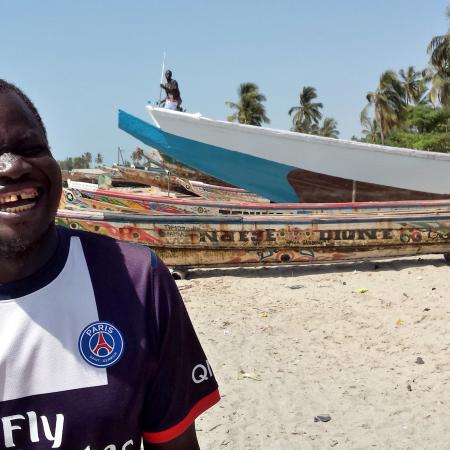
"Por una vez, el trabajo lo hicieron localmente los miembros de las Áreas Marinas Protegidas. Esta iniciativa cartográfica partió de los pescadores. Recibimos apoyo, pero hicimos el trabajo con una pinza de nuestra propia cosecha. Es importante demostrar que podemos hacer las cosas por nuestra cuenta, sin esperar a que todo venga de fuera. Esta cartografía nos ayudó a conocer mejor nuestra AMP, a seleccionar zonas para arrecifes artificiales y a proponer medidas de gestión adaptadas". Así describe Abdou Karim Sall, el carismático presidente del comité de gestión de la AMP de Joal-Fadiouth, la cartografía participativa de las praderas marinas realizada por la AMP en 2012.
La AMP comunitaria de Joal-Fadiouth fue creada en 2004 por el gobierno senegalés con el objetivo de conservar la biodiversidad y mejorar los rendimientos pesqueros y los beneficios socioeconómicos para los pescadores artesanales locales.
Abdou Karim Sall, natural de Joal-Fadiouth, es consciente desde hace tiempo del importante papel que desempeñan las praderas marinas florecientes para las especies de peces de importancia comercial. Los usuarios locales de los recursos, como el Sr. Sall, suelen ser los mejores administradores del entorno que les rodea. Involucrar a los pescadores locales en la cartografía de las praderas marinas ha garantizado el uso de sus mejores conocimientos cotidianos, al tiempo que ha proporcionado oportunidades para sensibilizarlos sobre el papel fundamental de las praderas marinas para las especies de peces de las que dependen para su subsistencia.

